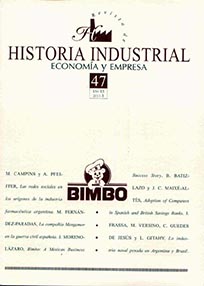Managing Technological Change by Committee: Adoption of Computers in Spanish and British Savings Banks (circa 1960-1988)
DOI:
https://doi.org/10.1344/rhi.v20i47.20835Keywords:
Comparación de instituciones financieras, Instituciones financieras europeas después de 1913, Historia micro-empresarial, Dirección de la innovación tecnológicaAbstract
This article explores how savings banks managed the process of computerization through ad hoc management committees articulated under the aegis of national associations. The combination of cash payments (and low penetration of cheques) in the Spanish retail sector together with increasing administrative costs, acted as incentives for Spanish savings banks embracing applications of computer technology to articulate viable solutions for cost reductions, offer alternative payment systems to cash and facilitate greater diversification. A running comparison is made with similar developments in Britain. Computerization committees had little impact amongst the trustee savings banks (TSB). This responded to a combination of a poor corporate strategy and a number of external events. By the mid-1970s it was evident that the trustee savings banks had lost a significant share of the total domestic deposits in sterling. Meanwhile, collective investments in computer technology applications were instrumental for Spanish savings banks to successfully contest the domestic retail bank market.Downloads
Download data is not yet available.
Downloads
Published
2017-12-21
How to Cite
Batiz-Lazo, Bernardo, and Joan Carles Maixé Altés. 2017. “Managing Technological Change by Committee: Adoption of Computers in Spanish and British Savings Banks (circa 1960-1988)”. Revista De Historia Industrial — Industrial History Review 20 (47):117-50. https://doi.org/10.1344/rhi.v20i47.20835.
Issue
Section
Articles
License
El/la autor/a cede los derechos al/la editor/a. Creative Commons
El/la autor/a que publica en esta revista está de acuerdo con los términos siguientes:- El/la autor/a cede en exclusiva todos los derechos de propiedad intelectual al/la editor/a para todo el mundo y toda la duración de los derechos de propiedad intelectual vigentes aplicables.
- El/la editor/a difundirá los textos con la licencia de reconocimiento de Creative Commons que permite compartir la obra con terceros, siempre que éstos reconozcan su autoría, su publicación inicial en esta revista y las condiciones de la licencia.





